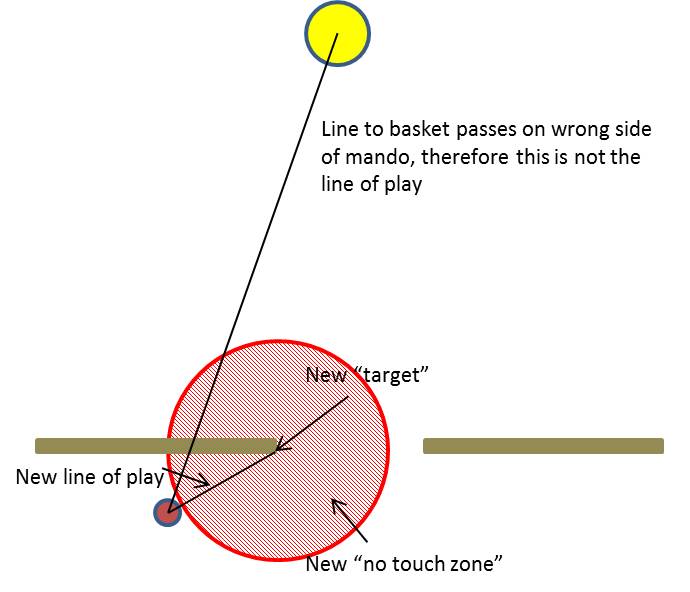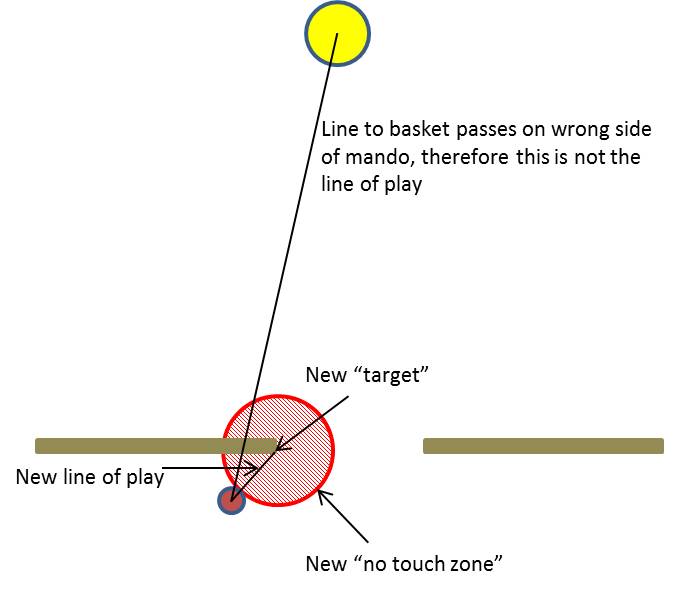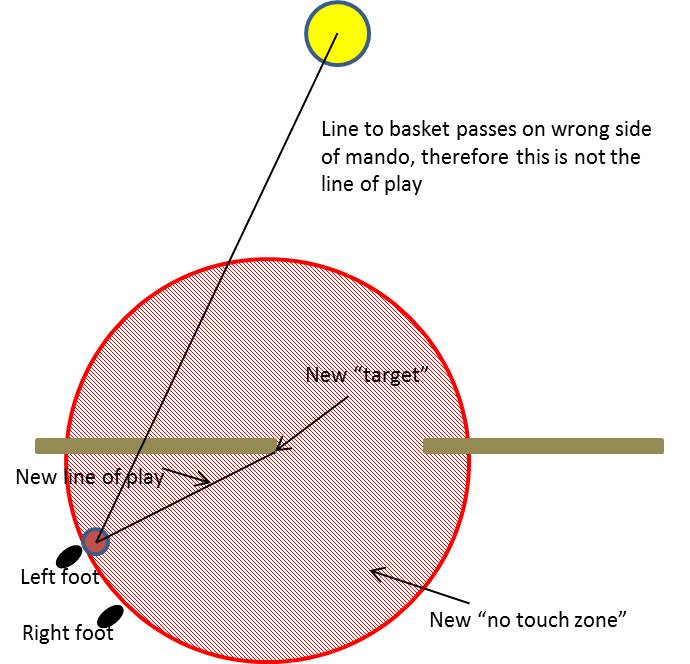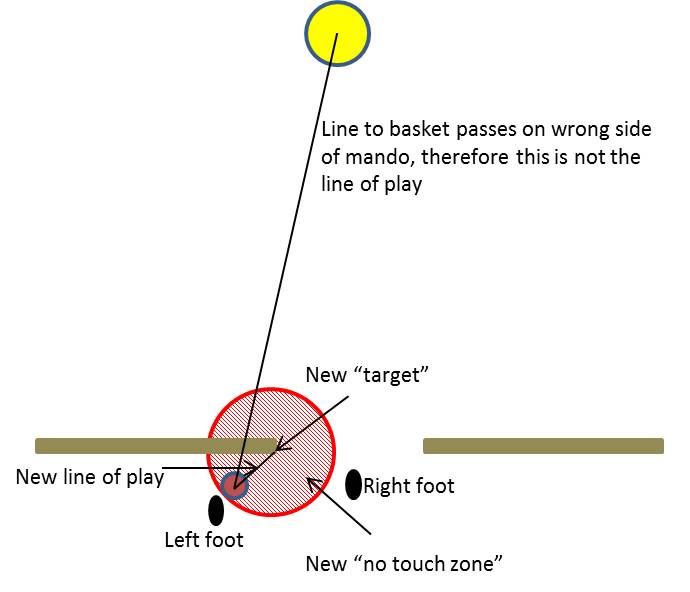I watched much of the video from the 2015 USDGC and I have come to the conclusion that many pro and non-pro golfers do not know about or do not understand all rules associated with mandos, in particular Rule 804.02.F, which states: "The nearest mandatory which has not yet been passed is considered to be the target for all rules related to marking the lie, stance, obstacles, and relief, if the line of play does not pass to the correct side of that mandatory."
Two examples from Hole 7 at the 2015 USDGC are notable: 1) Ricky Wysocki's birdie putt during the final round; and 2) Eagle McMahon's second shot during round 2. For both of these examples the player used an incorrect line of play and, thus, their stance was completely illegal, but nobody called it.
If the bamboo structure was an obstacle, then their stances looked legal. But, the bamboo structure is a mando and the above mentioned rules are applicable. Go back and look at the relative locations of their disc/mini, the basket, and the opening in the mando. Where his mini is located means that the line of play must be from the mini to the edge of the mando opening, and, NOT a direct line to the basket through the wall of the mando. It is very clear on the videos that the line of play used by Ricky/Eagle was incorrect and thus the stance was completely illegal. I think that once you understand Rule 804.02.F, and really look at the video, there is no other conclusion than an illegal stance, and not by a little bit, but significantly illegal, especially Ricky's birdie putt. Based on my estimates, Ricky needed to rotate his stance 40 to 50 degrees counterclockwise and Eagle needed to rotate his stance 25 to 35 degrees clockwise to be legal.
Please note that I am bringing this up so that more disc golfers will understand the stated rule and use the correct line of play. Cheers
Two examples from Hole 7 at the 2015 USDGC are notable: 1) Ricky Wysocki's birdie putt during the final round; and 2) Eagle McMahon's second shot during round 2. For both of these examples the player used an incorrect line of play and, thus, their stance was completely illegal, but nobody called it.
If the bamboo structure was an obstacle, then their stances looked legal. But, the bamboo structure is a mando and the above mentioned rules are applicable. Go back and look at the relative locations of their disc/mini, the basket, and the opening in the mando. Where his mini is located means that the line of play must be from the mini to the edge of the mando opening, and, NOT a direct line to the basket through the wall of the mando. It is very clear on the videos that the line of play used by Ricky/Eagle was incorrect and thus the stance was completely illegal. I think that once you understand Rule 804.02.F, and really look at the video, there is no other conclusion than an illegal stance, and not by a little bit, but significantly illegal, especially Ricky's birdie putt. Based on my estimates, Ricky needed to rotate his stance 40 to 50 degrees counterclockwise and Eagle needed to rotate his stance 25 to 35 degrees clockwise to be legal.
Please note that I am bringing this up so that more disc golfers will understand the stated rule and use the correct line of play. Cheers




